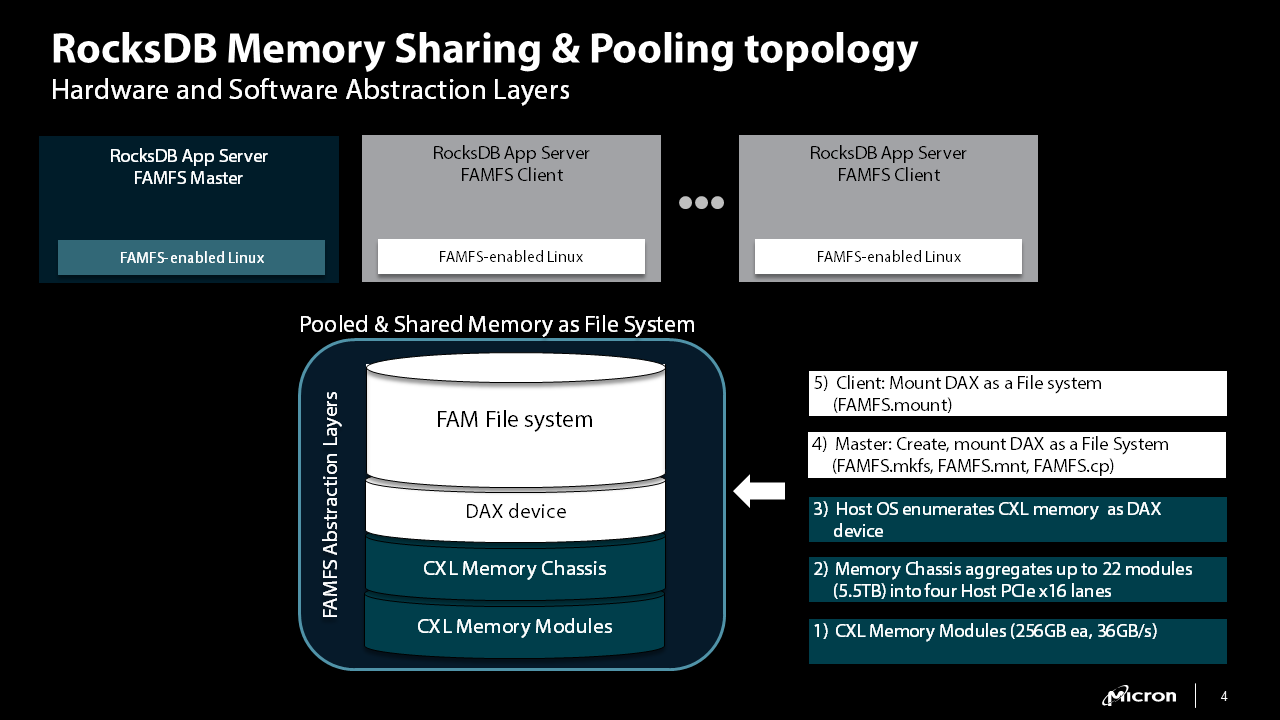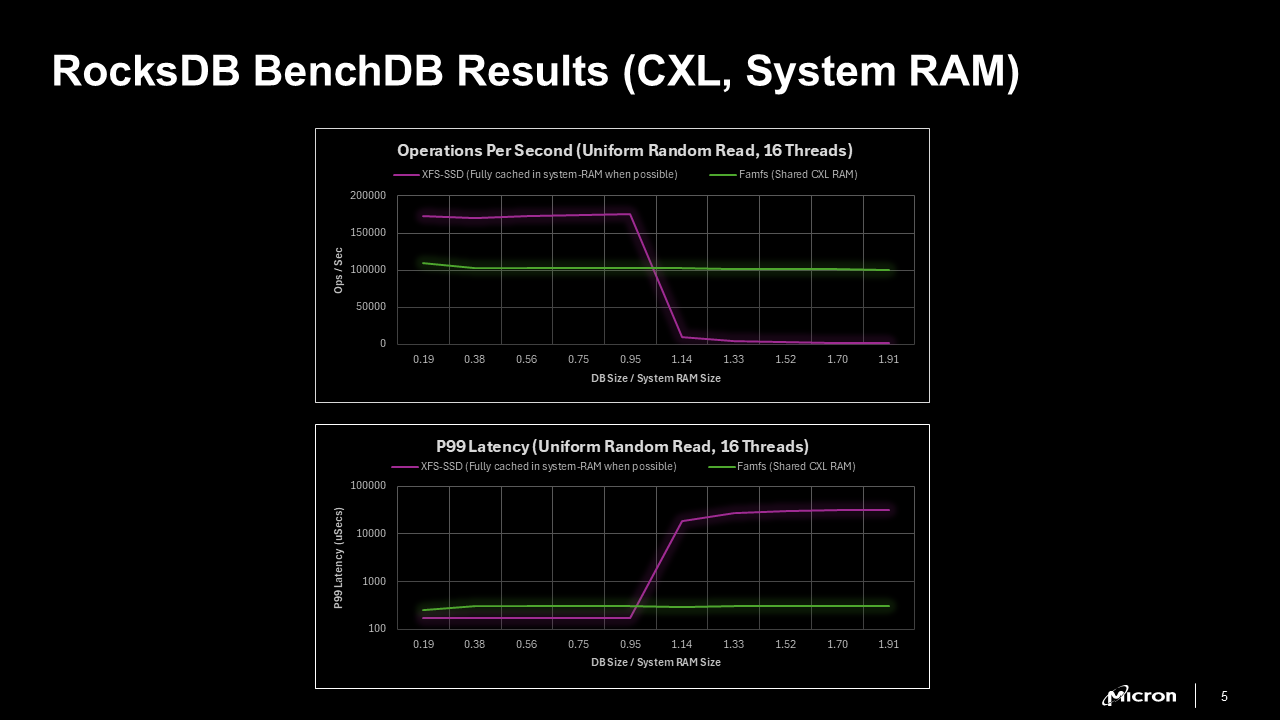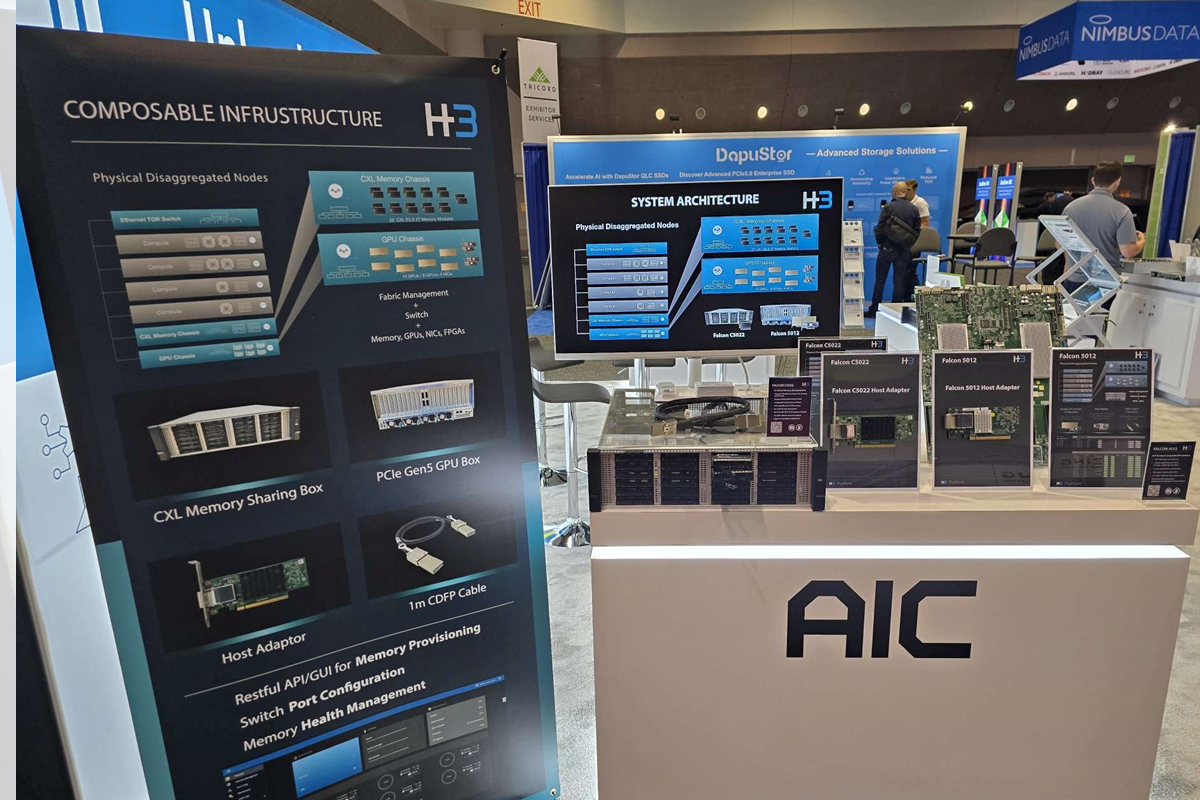In
today's data-intensive application environment, the demand for high-performance
and scalable memory solutions has become crucial. To address the insufficient
DDR memory resources and performance limitations of traditional systems, H3
Platform has introduced the industry's first CXL 2.0 memory chassis, in
collaboration with Micron, showcased the FAMFS shared-memory file system at the
AIC booth during FMS 2024. This innovative memory-sharing solution is designed
to provide memory pooling and sharing capabilities for database, machine
learning, and artificial intelligence workloads.
Solution Architecture

Our
CXL Memory Sharing solution significantly enhances memory capacity, achieving
up to 5.5TB of bandwidth per x16 PCIe lane through the disaggregation and
sharing of memory resources. This breakthrough not only offers a 10x increase
in memory capacity but also enables CXL memory to be directly exposed as a file
system to applications without altering the existing application
architecture.
In
this setup, CXL memory modules are aggregated into a CXL Memory Chassis,
supporting up to 22 E3.S modules with a total capacity of 5.5TB. These modules
are connected to 4 hosts via PCIe Gen5 x16 lanes.
On
the host side, the FAMFS file system mounts these CXL memory modules as DAX
devices, allowing applications like RocksDB and other in-memory databases to
perform read and write operations directly on CXL memory modules. RocksDB can
seamlessly utilize these DAX devices and run the file system on them without
any modifications, demonstrating compatibility between CXL memory and RocksDB.
Moreover, the seamless integration of Linux/KVM with FAMFS further enhances the
application of CXL memory in RocksDB, making this integrated solution highly
effective for modern data-intensive workloads.
Benchmark Results
The
provided benchmark chart clearly illustrates the performance of RocksDB under
different storage solutions, particularly comparing the performance differences
between using XFS-SSD and shared CXL RAM (FAMFS) in random read operations.

Chart Analysis:
Operations Per Second (Ops/Sec): The
upper chart shows the number of operations per second in random read operations
as the database size approaches and exceeds the system RAM capacity. When using
XFS-SSD fully cached in system RAM, performance drops sharply as the
database size surpasses the system RAM capacity, reducing
operations from nearly 200,000 to almost zero. In contrast, the FAMFS solution
using shared CXL RAM maintains stable performance even when the database size
exceeds the system RAM capacity.
P99 Latency: The lower chart
shows the P99 latency trends in random read operations. When using XFS-SSD
fully cached in system RAM, latency increases dramatically as the database size
surpasses the system RAM capacity, rising from hundreds of microseconds to tens
of thousands. In contrast, the FAMFS solution using shared CXL RAM maintains
low latency even when the database size exceeds the system RAM capacity,
demonstrating exceptional performance stability.
These
benchmark results highlight the advantages of combining CXL memory
chassis with FAMFS in handling RocksDB workloads. Compared to traditional
XFS-SSD solutions, the FAMFS solution using shared CXL RAM can maintain stable
operational performance and low latency even when the database exceeds system
RAM capacity, making it an ideal choice for data-intensive applications.
Potential Benefits
These
results not only demonstrate the system's flexibility and stability under
different data loads but also underscore the potential and practical value of
CXL technology in enhancing database application performance. For application
scenarios requiring high performance under heavy load conditions, the
combination of CXL memory chassis and FAMFS is undoubtedly a great
solution.
Integrating CXL chassis and FAMFS enhances performance and delivers
significant total cost of ownership (TCO) benefits. By freeing up system RAM
originally allocated for RocksDB execution, system resources can be utilized
more efficiently for broader general-purpose computing. Additionally, RocksDB
data in CXL memory can be shared and pooled across other RocksDB nodes or
virtual machines, further increasing system flexibility. The higher CXL
capacity also reduces data transfers across storage networks, thereby lowering
system power consumption.
Extended Applications
This
solution is also applicable to various other data-intensive applications such
as Apache Arrow, Jupyter, NumPy, Pandas, Dask, PyTorch, DuckDB, Apache Spark,
Ray, Velox, and more, fully demonstrating its potential in high-performance
computing and data processing scenarios.
The
joint solution by H3 Platform and Micron, through introducing the CXL 2.0
memory chassis and FAMFS file system, has successfully addressed the
insufficient DDR memory resources and performance challenges faced by
traditional systems in data-intensive applications. This innovative technology
significantly enhances memory capacity and performance while achieving
compatibility with existing applications through simple integration.
Particularly in handling workloads such as RocksDB in in-memory databases, the
combination of CXL memory and FAMFS showcases exceptional performance and
stability, making it an indispensable solution for future data-intensive
applications.



